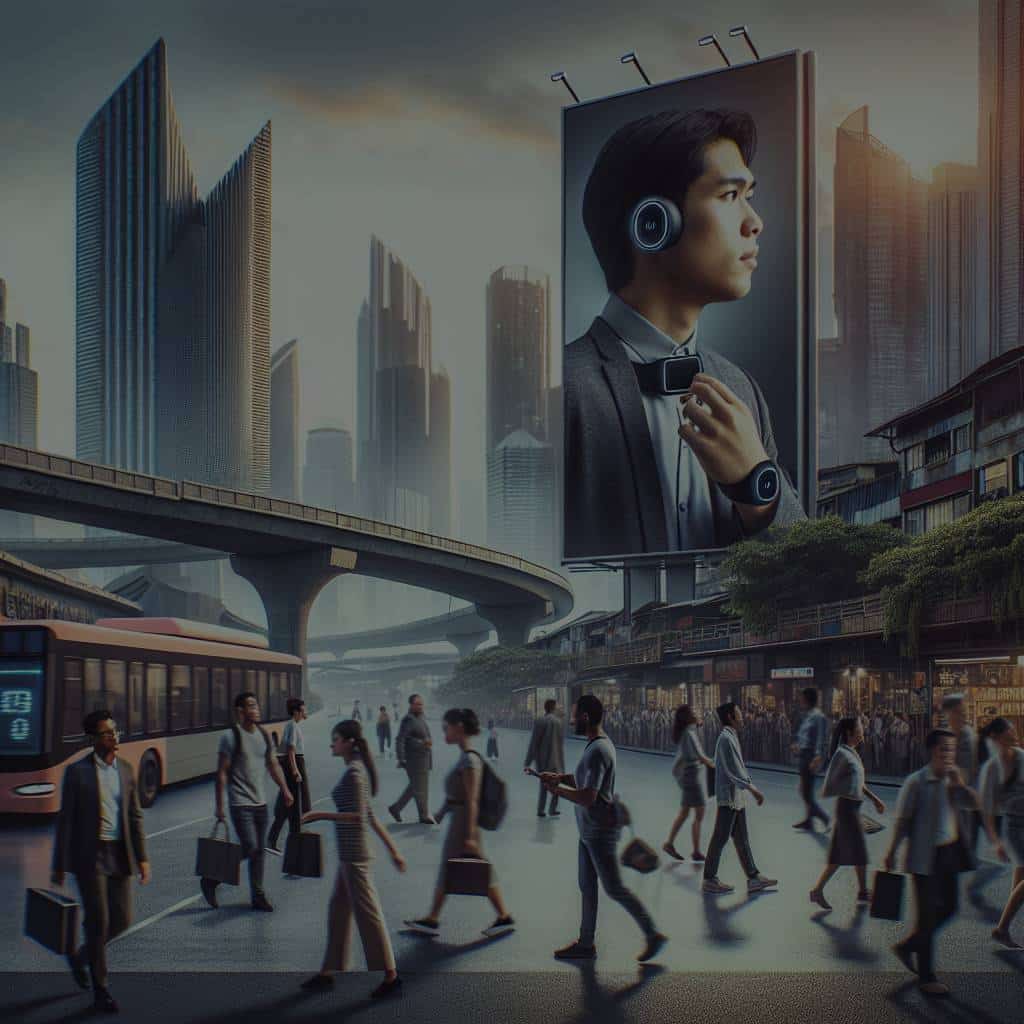As we dive into the era of amplified environmental consciousness, air pollution has become a topic of major concern. The adverse impact it has on our health is profound and well-documented in numerous studies. In cities, the rate of exposure to harmful air pollutants is alarmingly high.
Many factors contribute to poor air quality, with traffic being a predominant one. This is especially true for urban commuters, who are potentially exposed to high levels of air pollution on a daily basis. Interestingly, a recent study reported that commuters inhale more pollutants due to increased concentrations of air pollution on their route.
Have you seen this : The ethical challenges posed by chatbots
This has led to a surge in the use of personal air purification devices. These devices, often in the form of wearable filters, promise to guard the user against harmful pollutants, by providing them an envelope of clean air. But, will these personal air purification devices become a standard for urban commuters? Let’s delve into the matter.
The Impact of Air Pollution on Health
Air pollution is a silent killer. It’s not just the environ that suffers; our health takes a serious hit too. Long term exposure to polluted air can lead to several health problems such as respiratory diseases, cardiovascular issues and even lung cancer.
This might interest you : How Are Graphene-Based Water Filters Impacting Access to Clean Water?
In cities, where air pollution often exceeds safe limits, the health risks are even more pronounced. A study with the DOI, published in a reputable science journal, highlighted that prolonged exposure to high concentrations of pollutants can even trim off years from your life expectancy.
For urban commuters, the risk is twofold. Not only are they exposed to polluted air while commuting, but also the confined, closed spaces of vehicles can trap pollutants, resulting in them inhaling more harmful substances.
The Rise of Personal Air Purification Devices
As awareness about the negative impacts of air pollution grows, so does the demand for solutions. Personal air purification devices have emerged as one such solution. These portable filters promise to shield the user from harmful pollutants.
Typically, these devices are wearable and include a filter that screens out hazardous particles from the air. Some even come with features such as real-time air quality monitoring and adjustable filtration rate.
A study reported that these personal air filtration devices can significantly reduce the exposure to harmful pollutants. Companies, eager to capitalize on this growing market, have been launching innovative products that are not only effective but also stylish and convenient to use.
How Effective Are These Devices?
While the idea of a personal bubble of clean air is indeed attractive, one must question the effectiveness of these devices. After all, it’s a matter of health and no compromises can be made there.
Studies have shown that these devices can indeed filter out a significant amount of pollutants, with some even claiming to achieve a 99% filtration rate. However, the effectiveness of the device largely depends on the fit. If the device is not properly sealed against the face, polluted air can still be inhaled.
Another important factor is the size of the pollutants. Most devices can filter out larger particles effectively. However, smaller particles, often the most harmful ones, may still slip through.
Thus, while personal air purification devices can reduce exposure to pollutants, they are not a foolproof solution.
The Future of Personal Air Purification Devices
The future of personal air purification devices largely depends on advances in technology and legislation. As the technology evolves, these devices are likely to become more effective and convenient, making them a more appealing choice for urban commuters.
Furthermore, the role of legislation cannot be underestimated. If governments recognize the severity of air pollution and enforce regulations to ensure the quality and effectiveness of these devices, they could indeed become a standard for urban commuters.
The Role Of Urban Planning and Sustainable Transport
While personal air purification devices can serve as a protective measure, they are not a cure for air pollution. The root cause, namely the high concentrations of pollutants in our cities, must be addressed.
Urban planning and sustainable transport have a major role to play here. By reducing traffic, promoting the use of public transport and creating green spaces, cities can significantly lower air pollution levels.
Moreover, encouraging sustainable commuting habits such as cycling or walking not only reduces exposure to pollutants but also improves overall health. Hence, while personal air purification devices can be a part of the solution, they cannot replace the need for clean, sustainable cities.
To sum up, multiple factors will determine whether personal air purification devices will become a standard for urban commuters. While they can certainly aid in reducing exposure to pollutants, it’s imperative we don’t lose sight of the bigger picture – the urgent need for cleaner, greener cities.
The Science Behind Personal Air Purification Devices
If you’re like most of us, the idea of a personal bubble of clean air might seem like a future too far away. But the science behind personal air purification devices is closer than you think and not as complicated as it might sound.
At its core, these devices work by using filters to trap harmful particles in the air, thereby reducing your exposure to air pollution. The filters used in most devices are designed to trap particles of a certain size, which are then removed from the air you breathe. However, the effectiveness of these devices can vary greatly depending on factors such as the fit and filtration rate.
A well-fitted device, for example, can filter out up to 99% of harmful particles. However, if the device is not properly sealed against your face, polluted air can still be inhaled. This is why it is critical to ensure that the device is properly fitted and sealed.
Some devices also come equipped with real-time air quality monitoring systems, which can alert you to changes in air quality and adjust the filtration rate accordingly. This can help you stay protected even in highly polluted environments.
Interestingly, a recent study published in Google Scholar noted that while these devices are effective in reducing personal exposure to air pollutants, they are not foolproof. The study pointed out that smaller particles, often the most harmful ones, may still slip through the filters.
The Potential Health Benefits of Personal Air Purifiers
One of the main reasons why personal air purification devices have gained popularity is the potential health benefits they offer. By reducing exposure to harmful air pollutants, these devices can help mitigate the health risks associated with air pollution.
Long-term exposure to polluted air can lead to a host of health problems, including respiratory diseases, heart rate issues, and even lung cancer. For urban commuters, who are often exposed to high levels of air pollution, these devices can serve as a protective shield.
A study published in PubMed Crossref highlighted the benefits of these devices in reducing the inhaled dose of pollutants. It found that commuters who used personal air purifiers had a significantly lower intake of harmful particles compared to those who did not.
However, it’s worth noting that while these devices can help reduce exposure to pollutants, they are not a substitute for clean air. As such, efforts should be made to improve ambient air quality in our cities, through initiatives such as sustainable transport and urban planning.
Conclusion: Balancing Technology and Sustainable Measures
In conclusion, personal air purification devices could indeed become a standard for urban commuters in the near future. As technology evolves, these devices are likely to become more effective and convenient, providing a viable solution for reducing personal exposure to air pollutants.
However, the use of these devices should not detract from the larger issue at hand – the urgent need to reduce air pollution in our cities. Sustainable urban planning and transport measures are critical in tackling this issue. By reducing traffic, promoting the use of public transport, and creating green spaces, we can drastically improve air quality.
Thus, while personal air purification devices can mitigate the effects of air pollution, they should be part of a larger strategy to create cleaner, greener cities. After all, the ultimate goal should be not just to survive in a polluted environment, but to thrive in a clean one.











